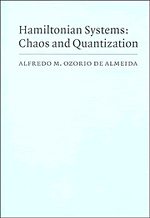6 - Integrable and quasi-integrable systems
Published online by Cambridge University Press: 05 July 2011
Summary
In the previous chapter we attained global understanding of a very simple kind of system. We now return to full Hamiltonian systems, but these will be restricted in such a way as to allow a global knowledge of their main characteristics. This class of integrable systems contains all the solved problems in classical mechanics, as well as the truncations of the Birkhoff normal forms studied in chapter 4. We will find that no limitation need be made on the number of freedoms of an integrable system. In fact, their definition can be extended up to an infinite number of freedoms, leading to the solution of important partial differential equations, but this subject lies beyond the scope of this book.
We start by defining integrable systems and by studying the geometry of their invariant surfaces. This leads to the definition of general action-angle variables. The consideration of a few simple examples elicits the concept of caustics, that is, singularities of the projections of invariant surfaces. We will discuss briefly Thorn and Arnold's classification of some of the simpler generic caustics.
In conclusion we will study perturbations of integrable systems. In section 6.5 we will discuss the averaging principle, which is then related to a stationary perturbation theory, reminiscent of the resonant normal forms encountered in section 4.4. This evokes the question of survival of the invariant surfaces of an integrable system after a perturbation, to be answered by the Kolmogorov, Arnold and Moser (KAM theorem).
- Type
- Chapter
- Information
- Hamiltonian SystemsChaos and Quantization, pp. 115 - 152Publisher: Cambridge University PressPrint publication year: 1989

